|
Title: Episode 1 - The Party Doth Commence
Music by audionautix.com (creator: Jason Shaw; released under Creative Commons License 3.0, Attribution 3.0 Unported). Intro: "Intro 5"; outro: "Jenny's Theme." Many thanks to Kirsten S. for compiling this month's show notes! (Looking for a transcript? We have one here.) Contact information Stilly River Yarns - https://www.stillyriveryarns.com (360) 631-5801 // lindsey [at] stillyriveryarns [dot] com Patterns
Yarns
Products
Events
Designers
Books/Podcasts/Media
Organizations
0 Comments
Thank you so much to everyone who came to visit the shop as part of the 2018 Puget Sound LYS Tour last week. We welcomed over 750 visitors during the 5 days of the Tour, and after crunching the stats, an astonishing 83% of those folks were first-time visitors to the shop. WOW! We appreciate your feedback and suggestions - we've been debriefing with our volunteers and are already planning for next year's Tour in various ways.
During the Tour, we hosted Lydia Christiansen of Abundant Earth Fibers, Mary Roth of Elemental Fiberworks, and Karen Whooley of Occhi Blu Press/Karen Whooley Designs for trunk shows and demonstrations. We're always excited to support local businesses and other entrepreneurial women, and the Tour gave us an excellent opportunity to do so; it also gave you a chance to meet these women in person, handle their products and projects, and hear their stories. "Celebrating Community," the theme of this year's Tour, definitely came to life with their visits! Speaking of celebrating community... I'd be remiss to not highlight the contributions of everyone who played a role in our success this tour. We had help on the floor and behind the scenes from - in no particular order - Debbie, June, Caryn, Meredith, Kirsten, Sammi, Dave, Cheryl, Vicky, Marla, Sandi, Rose, and Eric. These volunteers were the folks who interacted most with customers while I ran the register, and they kept us supplied with food and coffee, made sure our guests were comfortable, and did the million tiny tasks that kept the shop clean and organized during the Tour. Thank you, too, to my family, who put up with me being frantically busy for the month before Tour and working insanely long hours to get everything ready. Our local UPS Store folks made sure we had patterns that looked great. The shop's neighbors were incredibly gracious about the crazy traffic and parking during Tour. And our suppliers made sure that we had exactly what we needed for Tour, helped us figure out how to pay for all of the extra yarn without melting the shop credit card, and were nothing but supportive as we built up to the Tour. (We sold completely out of items from several suppliers, and they were thrilled to hear how much you loved their products!) The Tour's commercial sponsors were also phenomenal - whether they gave the Tour direct financial support or donated items for the daily drawing bags, they are one reason why we were able to offer such great prizes, free passports, and pins. If you get a moment, we encourage you to drop them a line to thank them for their sponsorship and support! There's a complete list on the back of the passport, and you'll find a list of shops, companies, and people who donated items to the daily drawing bags inside the passport; most of the companies have a form for folks to contact them through their websites, and you can use those to send a quick note. Finally... thank YOU for your support of Stilly River Yarns. The shop's business plan has hinged on the outcome of our first LYS Tour from the very first draft, and we are proud to say that your financial support during the Tour will allow us to make investments in both inventory and equipment so that we can better serve you. We're going to be able to add in some new yarns and spinning/felting fiber options sooner than anticipated; we're also going to be able to buy some photography equipment that will make updates to the online store much easier and more consistent. Additionally, meeting so many of you during Tour, we learned that we have a large audience waiting for a small-loom weaving group; we're working to figure out how to make that work, but it looks like we'll be open late two nights a week in pretty short order! We are incredibly grateful for your business, and we hope that we'll see you again outside of the craziness and long hours of the Tour. If you're not local, you can stay in touch with us through our newsletter (signup forms are on the bottom of every page on our website) or our online communities - Facebook, Instagram, Twitter, and Ravelry. So here's to community in all of its forms - we hope you'll join us on a regular basis, whether in person or online. Thank you! Madrona Fiber Arts Winter Retreat is a weekend that I look forward to every year. I think it first crossed my radar when we were still living in Kansas - the Yarn Harlot (aka Stephanie Pearl-McPhee) blogged about it each year, and I thought that maybe one day I'd be good enough to go. We moved out to Stanwood in late 2012, and I went to Madrona for the first time in 2016. I was really surprised at how approachable many of the classes were and how wide a range of skill/experience levels were covered, and I started encouraging people to go. Last year I went with a friend. This year... well... let me show you a photo of us arriving at the hotel. (A deluxe double room at the Hotel Murano comfortably fits four adults, their bags upon arrival, and three full-sized spinning wheels. It starts getting crowded after everyone makes the first pass through the Madrona marketplace.) Our roommate group this year covers all craft areas, but our classes were all focused on spinning and weaving. Among the four of us, we took Designing Your Own Woven Bands (John Mullarkey), Spinning Notebook (Kate Larson), Gradient Spinning (also Kate Larson), Spinning for Norwegian Bandweaving (also also Kate Larson), Spinning for Weaving (Judith MacKenzie), Spinning Paper (also Judith MacKenzie), and Spinning Linsey-Woolsey (also also Judith MacKenzie). In talking with everyone over meals, drinks, and leisurely walks in frigid, windy weather, we were all really pleased with all of our classes. There was quite a bit of overlap, and I think we'll be comparing notes and touching base constantly over the next few months. Classes with Judith are always amazing and slightly more free-form than I anticipate, but here are some of the major takeaways:
No post on Madrona would be complete without a bit on the marketplace, but that shall have to wait until later in the shop weekend! Keep your eyes peeled for another post tomorrow or Monday. Until then - stay dry and warm, and happy crafting!
Last week on the blog, I wrote about the first iteration of the woven Rainbow Scarf and how it went very, very wrong. So let's turn it around and take a look at what went right the second time, plus lay out the planning process. The project started last fall when customers asked me to document a weaving project on the shop's Cricket rigid-heddle loom. Challenge accepted. I proposed four different colors of Sprout Sock from The Fiber Seed as possibilities and put the color choice up to a vote on Facebook and Instagram. The final winner was Rainbow in the Dark, a Dipped colorway - when put up into a twisted hank, Dipped colorways have a solid color on one half of the hank and speckles on the other side. Given this wild colorway, the project needed to be simple and let the yarn do the talking. I initially thought I'd just pair Rainbow in the Dark with a skein of Noir (just plain black). As I warped the loom, though, I saw that there was a real possibility for a cool experiment in planned pooling. Planned pooling is a way of calculating how the color runs in a variegated yarn will line up (or not) according to the width of the project and the size of hook/needle/reed used. (Want more information and a ton of examples? Check out this article by Karla Stuebing in Twist Collective, and then check out the Pooled Knits group over on Ravelry.) When I unhanked the yarn, I measured how long each color section was and ended up with about 14"/35.5 cm per section of black/rainbow speckle, with some variation due to the hand-dyeing and rehanking process. I was shooting for a longer scarf, so I decided to do a warp that would be a multiple of 14"/35.5 cm - I decided on 84"/2.13m. I also wanted to maximize the flashiness of the colorway, so I decided to make the warp 14"/35.5 cm wide - of course, I didn't write down how many ends that ended up being, but it was somewhere in the neighborhood of 140-150 ends in a 12-dent reed. As for the weaving itself, I decided on a plain-weave fabric. (Anything else in a busy shop seemed a little risky.) I wove this scarf with absolutely zero regard to draw-in or take-up or, really, any other aspect of finishing woven fabric; as a result, it's shorter than I would like. However, the color effect is so spectacular that I'm going to wear it anyway - just not in the long and loopy way that I would normally prefer. Because of how the colors on the skein intersected, there are some spectacular effects here - plaid, stripes, and pools of color alternating with pools of black that move back and forth down the length of the final scarf. The final step in the weaving process was to hemstitch and secure the fringe... I love hemstitching. Seriously. Finishing is such an important part of the process, and I love all of the steps. To do the final finishing of the project, I soaked the scarf in cool water and Eucalan for 30 minutes, spun out the excess water in the shop washer's spin cycle, and tossed it in the dryer. So - what would I do differently next time?
And that, gentle readers, is the story of the Second Rainbow Scarf! If you have questions, comments, or suggestions on this blog post - or if you've got ideas that you'd like to have me write about here! - please post a comment or drop me a line at Lindsey [at] stillyriveryarns [dot] com. Thanks for reading! I expect to have at least one new post up (if not two!) in about two weeks, after I come back from the Madrona Fiber Arts Winter Retreat. We won't be there as vendors, but we are going for a weekend of professional development and browsing the marketplace - can't wait to share with you then! The title of this blog post is a quote from Adam Savage, probably best known for his role as a co-host on the TV show Mythbusters ("Am.... I... missing an eyebrow?") And it's also a philosophy I'm working hard to adopt in my fiber arts projects, because failure is a pretty powerful process if you choose to use it to learn and move forward. I'm going to take a philosophical diversion for a second. Owning a fiber arts shop means choosing to be a part of a highly image-based industry. Our Instagram, Ravelry, and Facebook feeds are filled with beautiful photos of finished objects, modeled projects, and artful arrangements of new colors and textures. Don't get me wrong - that's important! Good photos mean that there's careful, professional consideration of an aesthetic, and consistency in image and aesthetic build trust, which make you (and us as a shop) want to work with and use those products. But there's a reason that lots of us really enjoy blooper reels and behind-the-scenes photos - we appreciate the artful, but we value the down-and-dirty, in-the-trenches perspectives that show that your favorite designers and dyers and shop owners are real people, too. Working with so many beginning crafters (and students, back in my career as a classroom teacher) over the years has proven one thing: it's ALSO vital to our industry to show that things... go wrong sometimes. For everyone. And we use those failures to reset our brains, examine what happened, think of how to fix it (or how to improve next time), and move on with the knowledge and reflection that we've gained. I share lots of stories of my failures with customers, and I own those failures. Because failure is an incredibly powerful teaching tool. And so, gentle blog readers, I present the story of The Rainbow Scarf. You might remember The Rainbow Scarf from Instagram. Customers asked me to weave something on the shop's rigid heddle loom. I accepted the challenge and had folks vote on colors; it was a close contest, but the Rainbow in the Dark colorway from The Fiber Seed was the winner. I posted excitedly about setting up the loom and getting started on the weaving process. This is one of the outtakes from that series. More experienced weavers in the audience will immediately notice the problem with the grocery bags that I cut to separate warp layers. (For my fellow rookie weavers: let me save you hours of frustration with one tip. Just go ahead and use something that spans the entire width of the back beam. Kraft paper, mini-blind slats, paint stirrers, it doesn't matter. Just don't skimp on that part of the process.) I merrily continued along, winding on my warp, snapping pictures, and sitting down to start weaving almost immediately. Blissfully ignorant of the mess I was getting myself into. I wove. I noticed that the edges of my warp were a little inconsistent. And tight. Well, a little tight is fine, right? Okay. As I continued, those edges got bowstring-tight. To the point where I was afraid the edges of the warp might snap. I put the loom aside for a couple of days, came back to it, and realized that the edges weren't great. And I wanted to have this as a shop sample. So I decided to undo the weft - about 18" worth, but hey. Weaving is quick, right? Right. I got back to the beginning and found this. Again, the experienced weavers in the audience are groaning and putting their heads in their hands as they look at the left side of the warp. (To my fellow rookie weavers: this is not what it's supposed to look like. This is pretty awful, actually.) By not being attentive to separating my warp layers, the edges (which weren't separated) were tensioned differently from the rest of the warp. That was the cause of the bowstring-tight warp threads at the edges. I looked at that setup, sighed. and realized... that was all gonna have to come out and be redone. This realization took place on the last day of business before our holiday break. So I took the loom home. (Yes, it is buckled into the front seat of my car. Safety first.) I got it home and put it in the living room, because if I had to unwind the warp to its full 84"/213cm length, I had both the room to unwind it and a windowsill on which to clamp the warping peg at the appropriate height. Excellent. I had hatched a recovery plan. We did our holiday thing, and then I immediately got to work. This is where I got overwhelmed. So many ends. So much yarn. Maybe I should resign this to a "dog" warp, cut it off, and toss it. NOPE, my frugal Midwestern upbringing interrupted. THAT IS $65 OF YARN. WASTE NOT, WANT NOT. "Fine," I told my frugal Midwestern upbringing. "I'm still putting it in time-out until I can deal with it." And so it sat, gracing our living room, right next to the Christmas tree, for almost a week. We had storytime. I stared at the loom menacingly as we read about quarry machines. We had meals. The loom might as well have been invited to the table to eat with us, such was its presence in the main public space of our home. On New Year's Eve, I decided to get serious. I untied the surgeon's knots at the front of the loom, had Eric help me hold and separate the warp threads so I could tie them to a coat hanger, put the warping peg on the windowsill, and got prepared to retension the warp. "Is that... yarn... hanging from your ceiling fan?" the astute reader might ask. Yes. Yes, it is. Because as we were retying the warp onto the coat hanger, Eric looked at everything. "These are supposed to go space-slot, space-slot, right?" I looked at him suspiciously. "Yes..." "Um. Hmmm. You've got two here that go space-space, slot-slot." I'll spare you the uncouth language that I used to describe the situation in that very moment, but let's just say that it was time for a brief time-out, a glass of water, and taking a moment to stand directly in front of the Christmas tree to admire it. With my back to the loom. Then it was back to work. We got it rethreaded, and there was cautious optimism. We repurposed several household items to get things back under tension again (not pictured: the chunk of 2"x4" lumber that Eric tied to the back apron rod to provide a counterweight). Eric also used a saw to cut down a roll of kraft paper to the precise width necessary to cover the entire warp beam of the loom, which is what I should have had him do in the first place. After retensioning, setting up the kraft paper, and winding the warp back on, we had a nice-looking result. (The loom is tilted down on its stand here to give more of an overhead view. But I assure you that it was a much healthier and happier loom than when it arrived at our house.) And that, folks, is how I fixed an utter failure at warping a rigid heddle loom. There was much cursing. There was a brief period of absolute resentment of the entire project. But failure is always an option. It's what you do with the failure that shapes the project, your learning, and your progress as a fiber artist. (And if you need help MacGyvering your failure into success, swing by your local yarn shop. They have resources and - more likely than not - actual similar experiences to what you've done.)
Postscript: I'm happy to report that the Rainbow Scarf is now completed and on display in the shop - but that will be a blog post for next week. Have an excellent weekend, everyone! Shopping for the holidays can be challenging.
Shopping for the holidays for a fiber arts aficionado (or making a wish list for people who aren't sure of the difference between a knitting needle and a crochet hook) can seem absolutely impossible. Luckily for you, that's where our holiday bundles and wish lists come into play! If you're a crocheter/knitter/spinner/weaver, you can create a wish list that we'll store on your customer card in the computer system. You can choose to give vague guidelines ("a gift certificate," "some kind of green sock yarn," and so on), or you can be super-specific ("3 balls of BFL Colours DK in the Honey colorway," "Clover Amour hooks, sizes C/D/E", "a copy of the Hitchhiker pattern and one of the variegated colorways of Sprout Sock," for example). You can then send your friends and family our way - we just need them to give us your first and last name, and we'll get them set up with something from your list! If you're a family member with a fiber artist who doesn't have a wish list, no worries. We've got you covered. We've taken the time to build a list of holiday bundles that will delight just about anyone, from newly-minted crafters to the most experienced folks in the area. The bundles are divided into budget ranges, starting at $10 and under. Download the PDF of the bundles list here, and please feel free to call, email, or stop by with any questions you might have! If your crafter has made purchases with us in the past, we can even look up what s/he has purchased and give you further guidance. Full-service yarn shop? You betcha. It's been just over six months since we opened our doors for the first time, and we cannot thank you enough for your support. Whether you've bought a sweater quantity of yarn, or brought friends and family to shop, or left us a review, or taken a class or private lesson, or forwarded our newsletter to another crafter, or done any of the million other small things you've done to spread the word about us, every little thing helps us grow stronger roots in this community.
As part of the growth process, we're very excited to take part in our first Small Business Saturday on November 25! Here are all the details.
We've got a couple of upcoming shop closures we want to let you know about.
My husband, Eric, and I will be celebrating our twelfth wedding anniversary this weekend. We got married over Labor Day weekend in 2005, just after Hurricane Katrina hit New Orleans, Louisiana. We donated somewhere around the equivalent of 20-25% of the value of cash and gift cards that people gave us - even though we only had one job between the two of us, it just didn't feel right to buy things to replace or upgrade what we had when so many people had lost everything.
That memory came to me this morning as I was getting ready to come into the shop. Yes, there's a lot of financial investment in opening a brick-and-mortar shop, and summer is definitely our lean season... but we find ourselves once more in a position to help those who need so much more right now. So. Next week, from opening on Tuesday to the close of business on Saturday (September 5-9), we're going to do our usual yarn shop thing. And on Saturday evening, I'm going to tally up the week's gross pre-tax sales, and 10% of that number - that's before I pay shop bills, rent, or even take a couple of bucks to buy a cup of coffee - will be donated to the Houston Food Bank. (Since we work with the Stanwood-Camano Food Bank, it seemed like a logical choice.) We hope you'll come by, make a purchase or two, and help Stilly River Yarns make a significant donation to the cause. I look forward to sharing the final donation total with you all next weekend! -Lindsey |
AuthorLindsey Spoor is the owner of Stilly River Yarns in Stanwood, WA. Archives
April 2024
Categories |
Reach out! |
Come visit us at our brick-and-mortar shop in Stanwood!
NEW LOCATION STARTING JULY 16, 2024:
7104 265th St. NW Suite 120 Stanwood, WA 98292 Shop phone: (360) 631-5801 Email: [email protected] Text: (515) 833-0689 |
|
|
Proudly powered by Weebly
Stilly River Yarns LLC
Copyright © 2024
Copyright © 2024


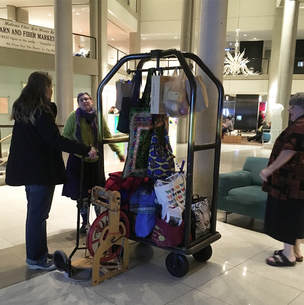


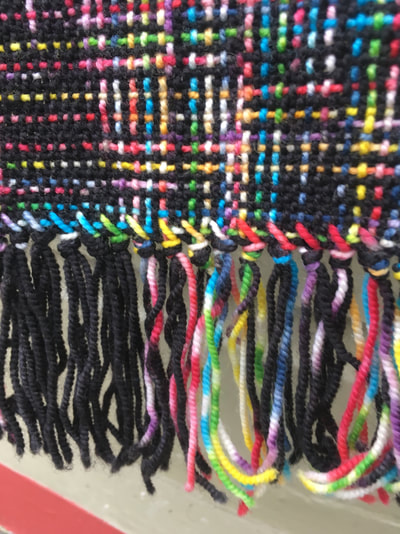


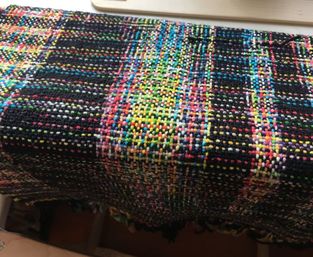
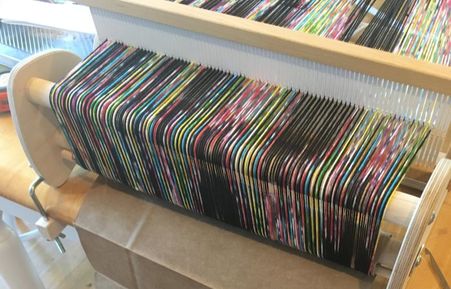



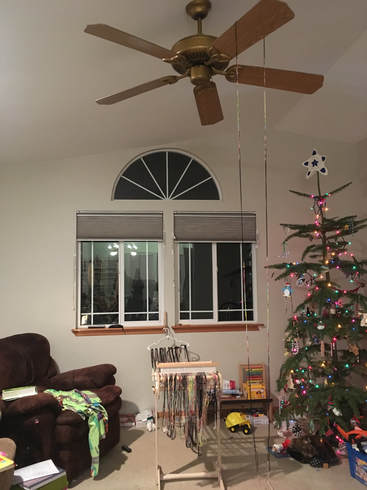
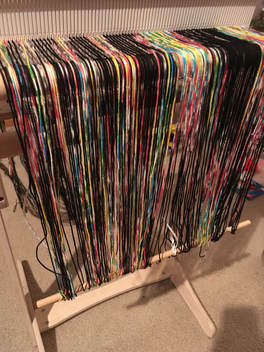




 RSS Feed
RSS Feed